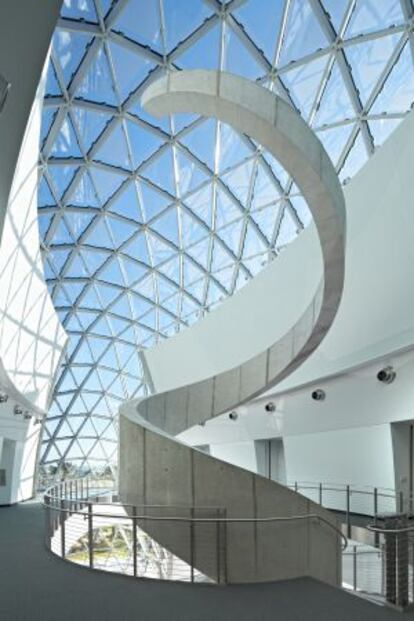Florida’s grand slice of Dalí
Among St. Petersburg's palm trees lies the second-largest collection of the surrealist’s works

It stands to reason that Salvador Dalí’s legacy should be scattered throughout key locations that meant something to him in life. There is the Dalí Theater-Museum in his home town of Figueres, the Espace Dalí in Paris, where he spent part of his youth and met Picasso, and the now-defunct Dalí Universe in London, another city where he spent time.
But it is less clear why there should be an imposing Dalí museum in St. Petersburg, which is your average Florida city full of palm trees, golf courses, beaches and retired folks.
It is surprising on two counts: first, Dalí never set foot in St. Petersburg; second, The Dalí Museum holds the world’s second-largest collection of Dalí work after Figueres. And it is all private. There are more than 2,000 items, including 96 paintings, drawings, photographs, sculptures and videos covering all periods of his career. The oldest ones date back to 1910 (Landscape) and 1914 (Fiesta in Figueres); there are several pieces from the 1930s, when he began to convert to Surrealism, and large-format works such as The Hallucinogenic Toreador, The Discovery of America by Christopher Columbus and Santiago El Grande.
Solving the mystery requires going back to 1940, when Salvador Dalí and his wife Gala fled a war-torn Europe and arrived in New York. Two years later, Albert Reynolds Morse, heir to a mining company, and his fiancée Eleanor, discovered the artist’s work at a retrospective held at the Cleveland Museum of Art. Something clicked. In 1943, on the occasion of their own wedding, the couple decided to splash out $1,250 on the painting Daddy Longlegs of the Evening — Hope!. It was the perfect excuse for both couples to get to know each other. Their first meeting in New York was one of many such encounters over the next four decades in the United States, Paris and the painter’s home in Port Lligat, near Cadaqués in Catalonia.
What the wealthy Edward James did for Dalí by buying much of his work and helping create Surrealist icons such as the Lobster Telephone and the Mae West Lips Sofa in London, the Morses did for him on the other side of the Atlantic. Their friendship continued until the extravagant artist’s death in 1989, despite his clashes with the traditional mentality of the Morse family patriarchs.
It is a very Daliesque structure, incorporating many of the artist’s favorite themes
From there, how the collection ended up in St. Petersburg, Florida, has a more trivial explanation. Until the late 1970s, Albert Reynold Morse and his wife Eleanor hung Dalí’s work inside their home in Cleveland, then in a space next to the company offices. But they were concerned about their collection being split up after they died, and were increasingly unwilling to pay the hefty taxes on a group of works that even then was worth an estimated 50 million dollars. So the Morses decided to find a new place for their Dalís.
They published a note in The Wall Street Journal expressing their desire to donate their work to the right institution, and this caught the eye of St. Petersburg’s political and business class, who paved the way to host the collection from 1982. After spending nearly 30 years inside a cellar, Dalí’s works moved to the spectacular building we have today. Designed by architect Yann Weymouth, of the HOK studio, it is a very Daliesque structure that combines reason and fantasy and incorporates many of the artist’s favorite themes.
The outside features a dome made up of 1,062 glass triangles; beyond the building, mathematically designed gardens recreate parts of the Costa Brava landscape, including a rock donated by the town of Cadaqués. A spectacular staircase shaped like a DNA double helix presides the interior, which also contains the galleries, a Dalí restaurant and the world’s largest collection of Dalí merchandise. Beside the permanent calendar of events, the museum has also come up with some rather bizarre proposals, such as Dalí-themed yoga sessions every Sunday.







































